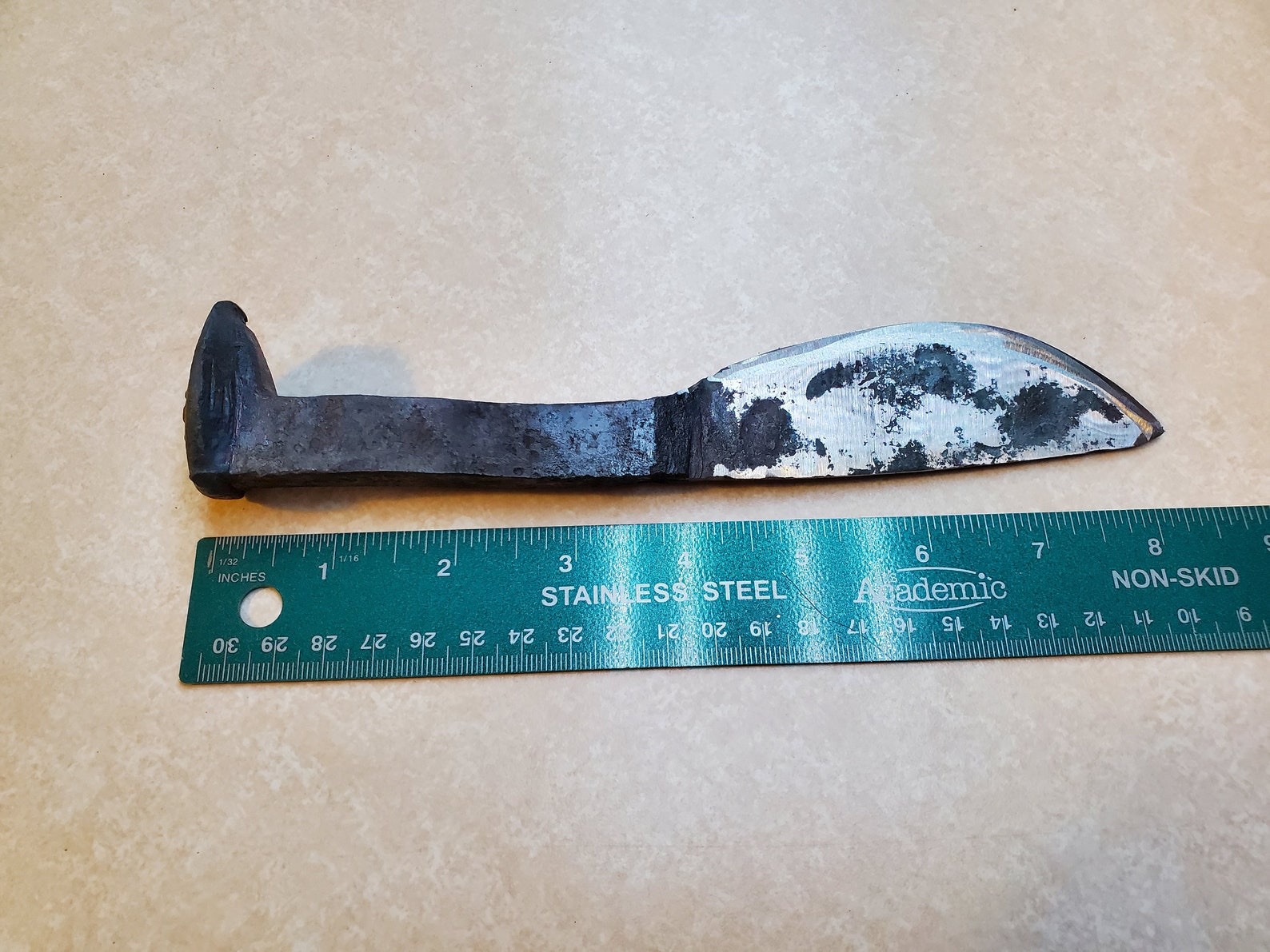

Ok, it is looking good and the major shape has been formed. (White line is added to show the imaginary center line.) And you can see how you have to hammer one side of the knife and then flip the knife over and hammer the other side. Just keep looking at it and bringing it back into shape along a center line. Working it will distort it a lot which is ok. This area of the knife where the blade tapers into the handle is called the choil of the knife. Hitting it right about where the white arrow shows. This is where we put the piece on the edge of the anvil and hit it with the hammer with the center of the hammer right about at the edge of the anvil. How do we do this? We do something called half face near hammering. This is where the blade is flatter and it flares into the handle. Now we start to define the difference between the blade and the handle. As you are doing this you will start to get a feel for the malleability of the metal and you will get a sense from that and from the color as to when it should go back in the forge for more heating. This is what the leaned hammering does.Īnd just like that, with a little bit of hammering our knife is starting to take shape. See how the Blade is starting to take shape? And see how you can now determine which side is the actual edge to be sharpened is. Want to see the eight basic hammering techniques that a blacksmith uses? I have them right here. That is because the spine of the knife is thicker than the blade. Now, I am not hammering directly flat down on it. And do this evenly on this side, then flip it over and do it on the other side too. Just to start to flatten out the blade end of it. Ok, once it is heated give it some hits with a heavy hammer. It has a nice even color and needs just a little bit more heating. We aren't going to be working that part of it. But you don't have to worry much about the butt of the spike. The more blacksmithing you do the more hammers you are going to accumulate. Watch the video if you want to see the various hammers in action.

They make a big difference when it comes to blacksmithing. One thing that I will talk about in this video is variety of hammers. I also have a video tutorial at the bottom of the page You can pretty much visualize the shape of the knife and then hammer it into that shape. And you don't need a whole lot of guidance for this project. If you are new to blacksmithing this is a great project to start out with. We do a down and dirty, quick and easy knife. It is pretty much a staple project of the art. It is one of the first projects that a person might make when first starting out in the craft. My name is Will and if you have questionsĬontribute projects or ideas you can contact me Make a Railroad Spike Knife Some do's and don'ts from a first time knifemaker.
Railroad spike knife how to#
How to Make a Sword - an overview of the process.


 0 kommentar(er)
0 kommentar(er)
